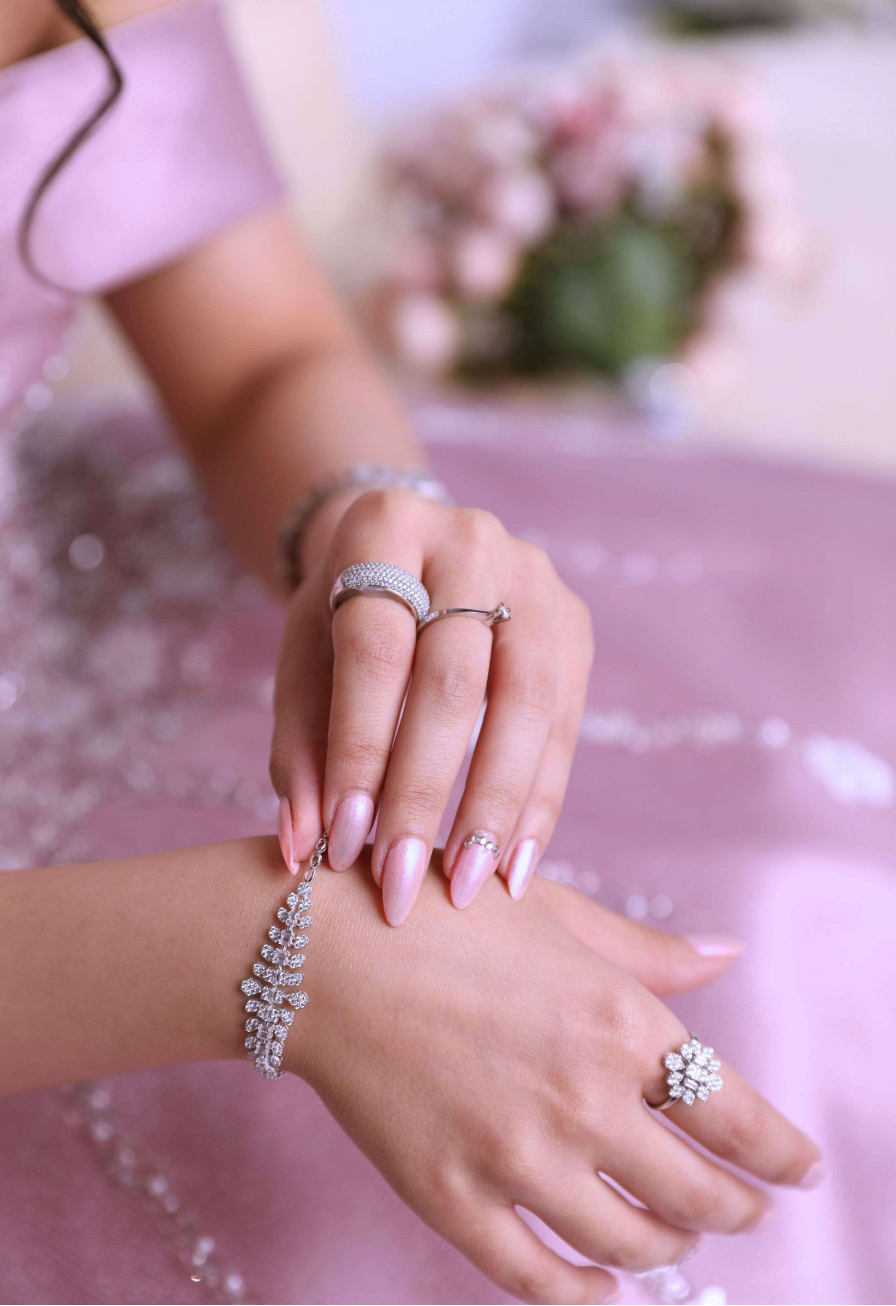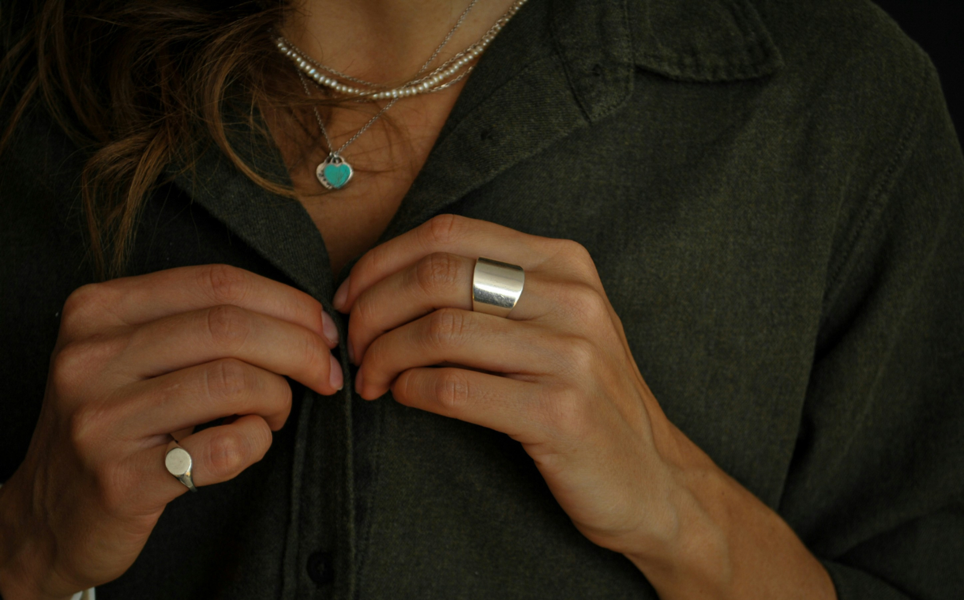Why Sustainable Jewelry is the Future – and How You Can Contribute
- Opália Jewelry

- Apr 6
- 3 min read
Updated: Apr 30

Sustainability is no longer just a trend; it has become a necessity. As climate change accelerates and natural resources become scarcer, industries across the world are rethinking their practices to reduce environmental and ethical harm. The jewelry industry is no exception. Traditional jewelry production has long been associated with waste, environmental destruction, and poor labor conditions. But change is possible—and necessary.
At Opália Jewelry, we believe that sustainable jewelry is the future, and we are committed to making it easier for you to make conscious choices. But what does sustainable jewelry really mean? And why should you care?
The Problem with Traditional Jewelry Production
The commercial jewelry industry has operated for decades with little regard for sustainability. While jewelry has always been a symbol of beauty and luxury, its production
often comes with a cost. Here are some of the major issues associated with traditional jewelry production:

1. Overproduction and Waste
The demand for fast fashion has not only affected the clothing industry but has also taken roots in the jewelry industry. Many mass-market jewelry brands produce collections in large quantities to meet seasonal trends. However, much of this jewelry remains unsold and eventually gets discarded, contributing to excessive waste. Especially talking about jewelry made with alternative materials such as plastics, lower grade metals and glass, these do not decompose. Which means the overproduced discarded jewelry can persist for centuries in landfills and eventually pollute the ground and wildlife in the area.
2. Harmful Mining Practices
Many of the precious metals and gemstones used in jewelry are mined using methods that are harmful to both people and the environment. Some of the biggest issues include:
Deforestation and habitat destruction – Large-scale mining operations often clear vast areas of forest, displacing wildlife and damaging ecosystems.
Water pollution – Toxic chemicals such as cyanide and mercury are frequently used in gold extraction, contaminating rivers and drinking water sources.
Carbon emissions – Mining operations require massive amounts of energy, contributing to global carbon emissions.
3. Unethical Labor Practices
A significant portion of the world's jewelry supply chain relies on labor from developing countries, where workers often face unsafe conditions, child labor, and unfair wages. Many workers, particularly in artisanal and small-scale mining operations, toil under hazardous conditions without proper safety equipment or fair compensation.
These issues paint a bleak picture, but they also highlight why sustainable jewelry matters. Change is not only possible; it is already happening.
What Does Sustainable Jewelry Look Like?
Sustainable jewelry encompasses a range of ethical and environmentally friendly practices. It considers the entire lifecycle of a piece of jewelry, from the sourcing of materials to its eventual disposal or reuse. Here are the key aspects of sustainable jewelry:

1. Ethical Sourcing of Materials
Sustainable jewelry brands prioritize materials that are responsibly sourced. This means using conflict-free or lab-grown diamonds, fair-mined gold, and gemstones obtained from ethical suppliers who ensure fair wages and safe working conditions.
2. Use of Recycled Metals and Gemstones
Mining new metals contributes to pollution and depletes natural resources. Sustainable jewelry brands opt for recycled gold, silver, and platinum, which reduces the need for new mining. Additionally, repurposing existing gemstones lowers the demand for newly mined stones, further minimizing environmental impact.
3. Low-Waste Production Methods
Unlike mass production, which often leads to surplus inventory and waste, sustainable jewelry brands produce pieces on demand or in small collections that are estimated to be sold out. This ensures that no materials go to waste and that resources are used efficiently.
4. Transparency and Ethical Business Practices
Sustainable brands are transparent about their sourcing and manufacturing processes. They work with certified suppliers, provide fair wages, and invest in ethical business practices that ensure accountability.
5. Longevity and Timeless Design
Fast fashion encourages frequent purchases and disposability, but sustainable jewelry is designed to last. Instead of following fleeting trends, sustainable pieces are timeless investments meant to be cherished for years.

How Opália Jewelry is Leading the Change in the Jewelry Industry
At Opália Jewelry, sustainability is at the heart of everything we do. Here’s how we are making a difference:
1. Responsible Materials
We use only recycled metals and ethically sourced gemstones or in the cases where we use diamonds, they are lab grown. This ensures that our materials come from responsible suppliers. By choosing recycled gold and silver, we significantly reduce our environmental footprint, and we try our best to avoid that your jewelry comes from child labor.
2. Small Collection Production
We avoid mass production by creating small collections. This means we do not hold excess inventory, preventing unnecessary waste and overproduction.
3. Commitment to Quality
Our jewelry is designed to last. We focus on craftsmanship and durable designs that transcend seasonal trends. We also only use high-grade metals like silver, gold and platinum, making each piece a long term investment.
How You Can Contribute to a More Sustainable Jewelry Industry
If you are looking to make more conscious jewelry choices, here are some steps you can take:

1. Choose Quality Over Quantity
Instead of buying cheap, mass-produced jewelry that will tarnish and break quickly, invest in high-quality pieces that will last for years.
2. Support Sustainable Brands
Look for brands that prioritize sustainability. Research their sourcing practices, materials, and ethical commitments before making a purchase.
3. Opt for Recycled and Upcycled Jewelry
Many jewelers offer recycled gold and silver options. You can also find vintage and second-hand jewelry, which reduces the demand for new mining.
4. Redesign Old Jewelry
If you have old jewelry that you no longer wear, consider having it redesigned into something new. This way, you can give new life to existing materials instead of discarding them.
5. Ask Questions
Be an informed consumer. Ask jewelry brands where their materials come from, how they ensure ethical labor practices, and what steps they take to minimize waste.
6. Avoid Fast-Fashion Jewelry
Cheap, mass-produced jewelry may seem appealing, but it often comes at a high environmental and ethical cost. Opt for brands that focus on sustainability and craftsmanship instead.
The Future of Sustainable Jewelry
As consumers become more conscious of their environmental impact, the demand for sustainable jewelry is growing. Innovations in lab-grown diamonds, blockchain-based traceability, and circular economy initiatives are reshaping the industry.
1. Lab-Grown Diamonds
Lab-grown diamonds offer a sustainable alternative to mined diamonds. They are chemically identical to natural diamonds but require significantly less energy and water to produce.
2. Blockchain for Transparency
Some companies are using blockchain technology to provide verifiable transparency in the supply chain, allowing consumers to trace a piece of jewelry’s origins from mine to market.
3. The Rise of the Circular Economy
More brands are embracing circular economy principles, where jewelry is designed to be repaired, reused, or recycled rather than discarded.
Final Thoughts
Sustainability in the jewelry industry is no longer just an option; it is a responsibility. As consumers, we have the power to drive change by making informed choices and supporting brands that prioritize ethical and eco-friendly practices.
At Opália Jewelry, we are committed to crafting beautiful, sustainable pieces that you can wear with pride. By choosing sustainable jewelry, you are not only investing in timeless beauty but also contributing to a more ethical and environmentally responsible world.
Are you ready to take a step toward a more sustainable future? Explore our collection and join us in making a difference, one piece of Jewelry at a time.







Comments